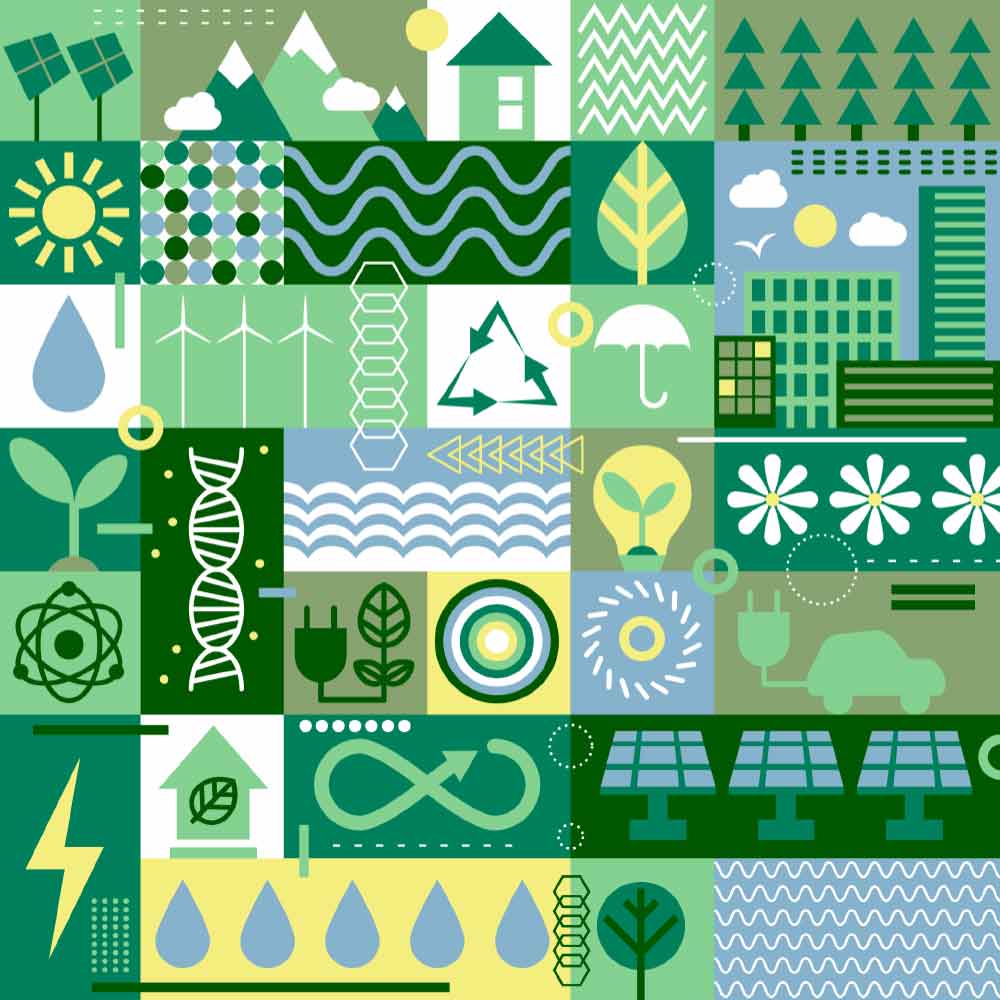New Semiconductor Using Sunlight Unlocks Green Hydrogen Potential

Cars with a range of thousands of kilometers, sustainable aviation, or renewable electricity storage are some of the possibilities opened up by the production of green hydrogen. It is also the second pillar of the renewable revolution. If wind and solar energy provide electricity, green hydrogen will also be an alternative to fossil fuels in industrial processes that require heating power. The main challenge for this technology is to achieve commercial viability, for which the new catalyst developed by the University of Michigan in the USA could provide a significant boost.
In this article, you will read about:
What are the main techniques to produce green hydrogen?
Most of the hydrogen on our planet can be found in water, so all efforts to obtain green hydrogen are aimed at splitting its atomic bonds and separating it from oxygen. Three types of reactions are currently used to achieve this:

- Electrochemical (Electrolysis). They are based on transmitting an electric current through electrodes – an anode and a cathode – immersed in water with an electrolyte such as salt or acid that enhances conductivity. In this case, electricity from renewable sources is used to generate green hydrogen.
- Photocatalysis/Photoelectrochemical. These use sunlight which, when in contact with catalysts or semiconductors made of photoelectrochemical materials as catalysts, releases hydrogen from water by converting photons into free electrons. This process is similar to photosynthesis, in which plants obtain hydrogen atoms from water from sunlight.
- Thermochemical. It is based on applying high temperatures that can break the water molecule, thus transforming thermal energy into chemical energy. Either in a single step – thermolysis – with temperatures above 2,000 ºC or in thermochemical cycles in stages with lower temperatures.
A new self-healing green hydrogen catalyst
So far, industrial-scale green hydrogen production is focusing on electrochemical technologies, but research into photocatalytic and photoelectrochemical technologies is offering encouraging results. The main advantage is that sunlight is used directly to generate the reaction rather than transforming it into electricity to carry out the electrolysis, which could ultimately offer higher conversion efficiency. The main obstacle to this technology was that the catalysts used degraded rapidly or were very unstable. Hence, the new self-healing green hydrogen catalyst developed by the University of Michigan is such a promising technology.
![]()
The device created by a team of scientists at the U.S. university consists of a window-sized lens that concentrates sunlight onto a transparent panel containing the water and the new catalyst. The latter is based on indium gallium nitride nanostructures grown on a silicon surface. Thanks to an insulating layer on the panel, temperatures of up to 75°C are reached, stimulating the photocatalytic reaction. The result is an efficiency of 9 % in the extraction of hydrogen from water, which is almost ten times the efficiency of similar technologies.
The semiconductor used offers several advantages. Firstly, it is very durable. Specifically, it can withstand the equivalent of the light of one hundred and sixty suns without deteriorating, even demonstrating self-healing capabilities. Secondly, it harnesses the entire solar spectrum: the higher wavelengths to generate the reaction and the infrared radiation to enhance it. Both aspects could result in the generation of green hydrogen at a much lower cost.
Accelerating green hydrogen production with ultrasonics
Irrespective of these advances, the production of green hydrogen utilizing electrochemical processes is also undergoing significant improvements. The latest of these, pioneered by the University of Melbourne in Australia, involves ultrasound, which increases the amount of hydrogen generated by conventional electrolysis techniques by fourteen. Besides boosting hydrogen production, the technology prevents oxygen and hydrogen bubbles from accumulating on the electrodes.
On the other hand, the efficiency of the new technique makes it possible to dispense with the usual acid electrolytes. In turn, the absence of acid enables using electrodes without high-cost anti-corrosion materials such as platinum or iridium. All this makes the green hydrogen production process cheaper and closer to commercial viability.
Overcoming the challenges of producing green hydrogen on an industrial scale will open up an infinite range of applications. For example, as pointed out in this article, it may become a great ally of sustainable aviation. And who knows if it will play a crucial role in urban mobility, as demonstrated by this bicycle powered by a hydrogen fuel cell.
Source:

